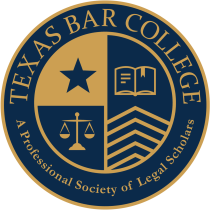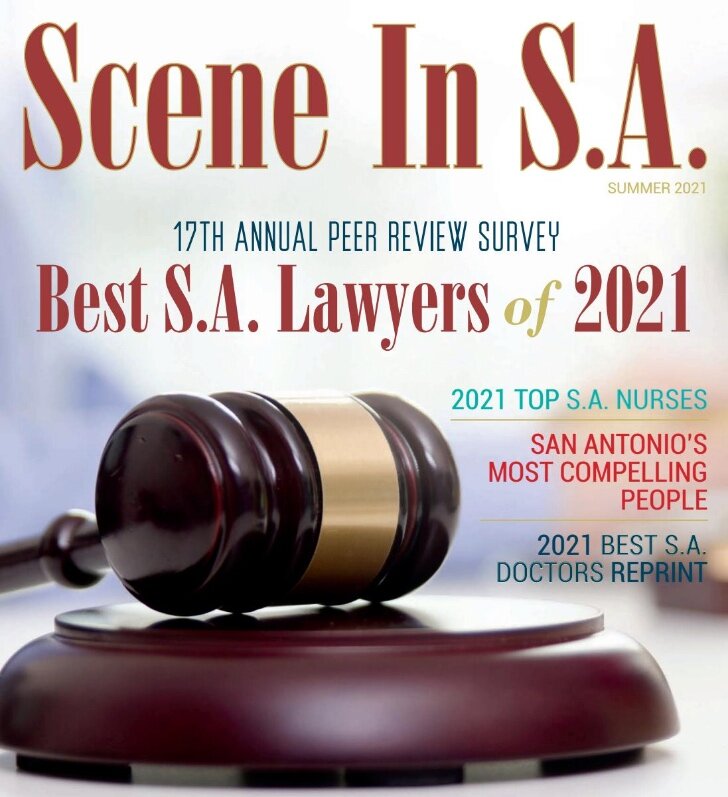The Robbie Tolan shooting incident took place in Bellaire, Texas, on December 31, 2008, when 10-year Bellaire police veteran, Jeffery Cotton, shot unarmed Robbie Tolan, son of famed baseball player, Bobby Tolan, in his parents' driveway. Tolan sustained serious injuries in the shooting and charges were pressed against Cotton. On May 11, 2010 a jury reached a verdict of not guilty and Cotton was acquitted, much to the dismay of minority leaders and critics around the country who continue to cite the case as an example of racial profiling and institutional racism. Here is one Court's recitation of the facts of what happened that evening:
At around 2:00 on the morning of December 31, 2008, John Edwards, a police officer, was on patrol in Bellaire, Texas, when he noticed a black Nissan sport utility vehicle turning quickly onto a residential street. The officer watched the vehicle park on the side of the street in front of a house. Two men exited: Tolan and his cousin, Anthony Cooper.
Edwards attempted to enter the license plate number of the vehicle into a computer in his squad car. But he keyed an incorrect character; instead of entering plate number 696BGK, he entered 695BGK. That incorrect number matched a stolen vehicle of the same color and make. This match caused the squad car’s computer to send an automatic message to other police units, informing them that Edwards had found a stolen vehicle.
Edwards exited his cruiser, drew his service pistol and ordered Tolan and Cooper to the ground. He accused Tolan and Cooper of having stolen the car. Cooper responded, “That’s not true.” And Tolan explained, “That’s my car.” Tolan then complied with the officer’s demand to lie face-down on the home’s front porch.
As it turned out, Tolan and Cooper were at the home where Tolan lived with his parents. Hearing the commotion, Tolan’s parents exited the front door in their pajamas. In an attempt to keep the misunderstanding from escalating into something more, Tolan’s father instructed Cooper to lie down, and instructed Tolan and Cooper to say nothing. Tolan and Cooper then remained facedown.
Edwards told Tolan’s parents that he believed Tolan and Cooper had stolen the vehicle. In response, Tolan’s father identified Tolan as his son, and Tolan’s mother explained that the vehicle belonged to the family and that no crime had been committed. Tolan’s father explained, with his hands in the air, “[T]his is my nephew. This is my son. We live here. This is my house.” Tolan’s mother similarly offered, “[S]ir this is a big mistake. This car is not stolen. . . . That’s our car.”
While Tolan and Cooper continued to lie on the ground in silence, Edwards radioed for assistance. Shortly thereafter, Sergeant Jeffrey Cotton arrived on the scene and drew his pistol. Edwards told Cotton that Cooper and Tolan had exited a stolen vehicle. Tolan’s mother reiterated that she and her husband owned both the car Tolan had been driving and the home where these events were unfolding. Cotton then ordered her to stand against the family’s garage door. In response to Cotton’s order, To-lan’s mother asked, “[A]re you kidding me? We’ve lived her[e] 15 years. We’ve never had anything like this happen before.”
The parties disagree as to what happened next. Tolan’s mother and Cooper testified during Cotton’s criminal trial1 that Cotton grabbed her arm and slammed her against the garage door with such force that she fell to the ground. Tolan similarly testified that Cotton pushed his mother against the garage door. In addition, Tolan offered testimony from his mother and photographic evidence to demonstrate that Cotton used enough force to leave bruises on her arms and back that lasted for days. By contrast, Cotton testified in his deposition that when he was escorting the mother to the garage, she flipped her arm up and told him to get his hands off her. He also testified that he did not know whether he left bruises but believed that he had not.
The parties also dispute the manner in which Tolan responded. Tolan testified in his deposition and during the criminal trial that upon seeing his mother being pushed, he rose to his knees. Edwards and Cotton testified that Tolan rose to his feet.
Both parties agree that Tolan then exclaimed, from roughly 15 to 20 feet away, “[G]et your fucking hands off my mom.” The parties also agree that Cotton then drew his pistol and fired three shots at Tolan. Tolan and his mother testified that these shots came with no verbal warning. One of the bullets entered Tolan’s chest, collapsing his right lung and piercing his liver. While Tolan survived, he suffered a life-altering injury that disrupted his budding professional baseball career and causes him to experience pain on a daily basis.
A civil suit followed the criminal trial. This suit was dismissed by the court through a process called summary judgment. The Fifth Circuit Court of Appeals agreed holding that there was no evidence that the police officer violated a clearly established law (an element needed to overcome a police officers normal immunity to civil suits such as this one).
Note that in the summary judgment context, the Court is not supposed to weigh the evidence or decide who should probably win at trial. That's the jury's job. In the summary judgment context, the Plaintiff should win if there is any question as to an issue of fact in the case. In this case it is hard to understand how there could be no question as to the police officers possible violation of law given that his own county's district attorney chose to criminally prosecute him for just such a violation. Nevertheless, the court found "no evidence" and dismissed the case.
Critics would argue that this is yet another instance of the court refusing to allow a case to go to the jury by usurping the legitimate role juries. Many practitioners have lamented this increasingly serious problem in the federal court system over the last few years.
That's where this case takes a surprising turn. Last week the U.S. Supreme Court vacated and effectively reversed the Fifth Circuit's decision, sending the case back to the appellate court for reconsideration. The court's per curium opinion (A "per curiam" decision is a decision delivered via an opinion issued in the name of the Court rather than specific judges.) stated that the lower court had failed to adhere to the fundamental principle that, at the summary judgment stage, every reasonable inference should be drawn in favor of the non-moving party (here the plaintiff). More specifically, the Court stated:
[The] Fifth Circuit failed to adhere to the fundamental principle that, at the summary judgment stage, reasonable inferences should be drawn in favor of the non-moving party, the decision below is vacated and remanded so that the Fifth Circuit can determine whether, when the evidence offered by the petitioner -- who was shot by the respondent, a police officer -- is properly credited and factual inferences are reasonably drawn in his favor, the police officer’s actions violated clearly established law.
***
And while “this Court is not equipped to correct every perceived error coming from the lower federal courts,” Boag v. MacDougall 454 U. S. 364, 366 (1982) (O’Connor, J., concurring), we intervene here because the opinion below reflects a clear misapprehension of summary judgment standards in light of our precedents.
This is a very notable case because such action by the Supreme Court is highly unusual. The high court simply does not normally get involved to correct lower courts for simply "getting it wrong." They reserve their opinions for cases in which a key issue of law needs to be interpreted, normally to mend a split in legal interpretation between the various lower courts.
For this reason I don't think it is going too far out on a limb to opine that the Supreme Court was trying to make a point in this case regarding the direction of summary judgment rulings by lower courts throughout the country. For years, civil rights attorneys practicing employment law have been lamenting the practice of courts expanding the use of summary judgment rulings beyond their intended role in the process and invading the province of the jury. More recently, academics and even federal judges have taken note of the problem, declaring that the practice is "gutting" anti-discrimination laws and quickly leading to the death of the jury trial for such cases.
So, while this decision may get little coverage in the normal or even the legal press, I think that may very well be the most important decision the Supreme Court issues this term. The importance of the jury trial in protecting individual Americans from powerful forces, whether they be government or corporate, cannot be overstated. John Adams said it this way:
The people choose a grand jury, to make inquiry and presentment of crimes. Twelve of these must agree in finding the bill. And the petit jury must try the same fact over again, and find the person guilty, before he can be punished. Innocence, therefore, is so well protected in this wise constitution, that no man can be punished till twenty-four of his neighbors have said upon oath that he is guilty. So it is also in the trial of causes between party and party [civil suits]. No man's property or liberty can be taken from him till twelve men in his neighborhood have said upon oath, that by laws of his own making it ought to be taken away, that is, that the facts are such as to fall within such laws. What a satisfaction is it to reflect, that he can lie under the imputation of no guilt, be subjected to no punishment, lose none of his property, or the necessaries, conveniencies, or ornaments of life, which indulgent Providence has showered around him, but by the judgment of his peers, his equals, his neighbors, men who know him and to whom he is known, who have no end to serve by punishing him, who wish to find him innocent, if charged with a crime, and are indifferent on which side the truth lies, if he disputes with his neighbor!
Letter of John Adams to the Boston Evening Post.
Thomas Jefferson added "I consider trial by jury as the only anchor ever yet imagined by man, by which a government can be held to the principles of its constitution."
This opinion shows that even the U.S. Supreme Court has taken note of this issue. Many practitioners and judges now fear that too many federal judges have gotten so caught up in the minutia of hyper-technical summary judgment tests that they fail to see the forest for the trees. The letter of the law regarding summary judgment does not favor the granting of summary judgment motions in a high percentage of civil rights employment cases. Quite the opposite. The letter of the law states that summary judgment is a tool to be used sparingly and only to weed out the most meritless of cases. The default is always supposed to favor the resolution of factual disputes by a jury trial.
In Tolan, the country's highest court has gone to a rather extraordinary length to make this point yet again. Let's hope the lower courts are listening.
READ: Supreme Court’s Full Opinion
UPDATE:
Following the Supreme Court’s decision in Tolan, the Fifth Circuit Court of Appeals revised its original decision slightly, vacating a small portion of the District Court's decision, and remanded the case back to the District Court for further review. The District Court set a trial date for September 2015. A few days before the trial was scheduled to begin, the federal judge removed the City of Bellaire as a defendant in the lawsuit, which prompted the Tolan family to file a motion for the judge to recuse herself. According to the Tolan family, the judge then dismissed all of the plaintiff's expert witnesses, but none of the defense's expert witnesses. Robbie Tolan reported being under a great deal of emotional distress during the seven-year court proceeding and told his family he did not want to continue the process. The family decided to settle the case with the City in lieu of a trial. According to the settlement papers in the case, the family settled with the City of Bellaire for $110,000.










